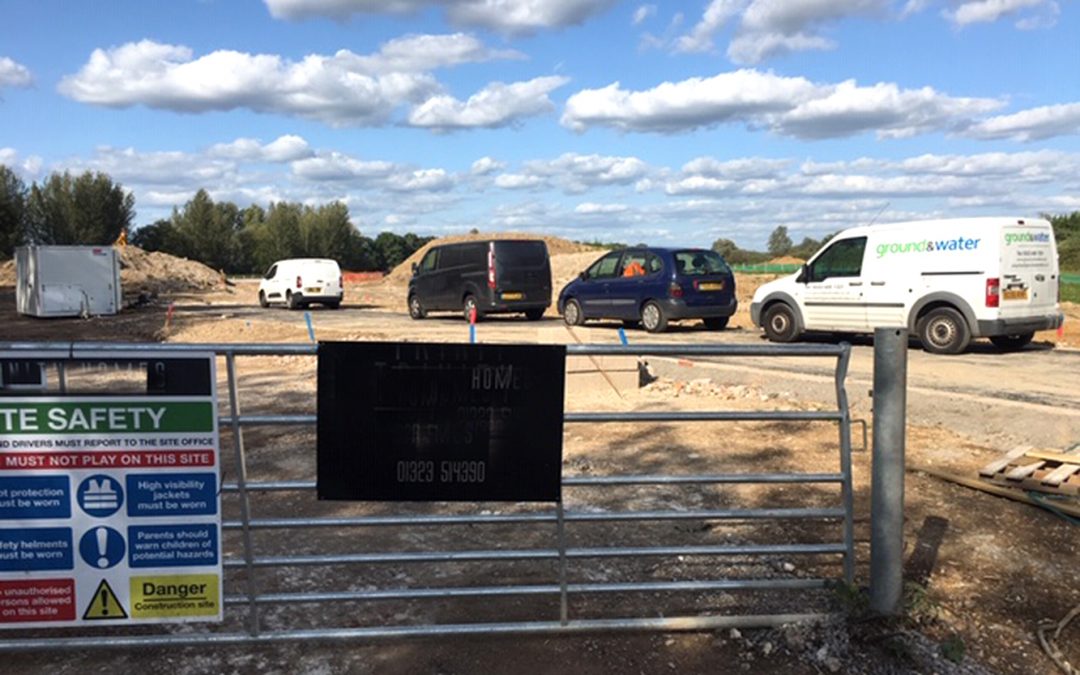Second Opinion Delivers Significant Cost Savings
6th September 2019
Geoenvironmental • Geotechnical • Specialist Services
Our Client

Preliminary-Assessment
Our Challenge
A previous site investigation had been carried out in 2017 by others. The developer was seeking a second opinion. Ground & Water’s preliminary assessment concurred there was the potential for Made Ground in the south of the site as a result of landfill activities and the back-filling of ponds.
The Ground & Water Approach
The previous advice was remediation was necessary in the private garden areas, comprising the removal of Made Ground to a depth of 600mm. It was recommended that the void produced should be backfilled with a high visibility geotextile over lain by a geogrid and the remainder back filled with certified clean sub-soil and Topsoil.
Additional investigation, chemical laboratory testing and risk assessment was undertaken by Ground & Water in August 2019. Further machine excavated trial pits were undertaken targeting the proposed private garden areas of the residential housing in the southern and central portions of the site.
By undertaking up to date risk assessments on the bundles of asbestos fibres encountered and CLAIRE statistical analysis, it was concluded that no remediation was considered necessary to protect end-users. A minimum thickness of 300mm of certified clean topsoil was recommended placed within all proposed back garden areas and 150mm in soft landscaped areas to form a growing medium.
The results of the ground-gas assessment undertaken by the previous contractor suggested that the site fell into a Characteristic Situation 1 (CS1), where no precautions to the ingress of ground-gas were considered necessary. However further monitoring was recommended.
“A pragmatic approach to ground gas risk assessment for the 21st Century” was used by Ground & Water, to determine if the site fell into CS1. This is instead of undertaking potentially expensive longer term ground-gas monitoring from the wells installed onsite.
The Outcome
Second opinions are well worth consideration, albeit on most occasions to simply provide greater confidence around risk assessment. We would love to hear from you if you feel your site needs a second look.
